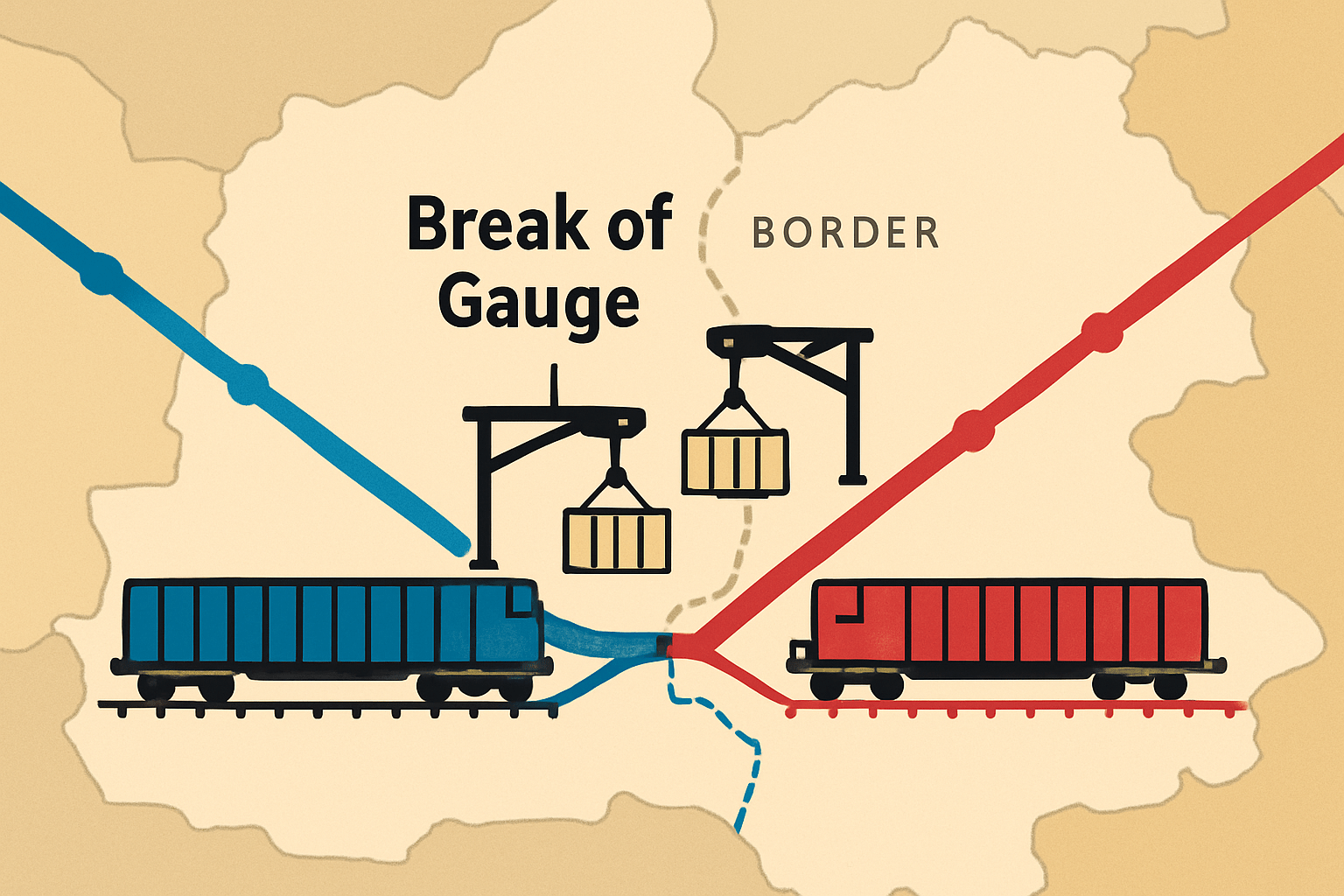These iron-and-timber barriers, etched into the landscape by history and politics, dictate the flow of goods, the speed of armies, and the very potential for continental integration. They are the physical manifestation of trust and mistrust between nations.
The Anatomy of a Steel Divide
At its core, a rail gauge is simply the distance between the inner sides of two parallel rails. While there are dozens of gauges in use, a few dominate the global map:
- Standard Gauge (1,435 mm): Used by about 55% of the world’s railways, this is the dominant gauge in North America, China, the Middle East, and most of Western and Central Europe.
- Russian Gauge (1,520 mm): The second most common, this broad gauge is the standard across all the former Soviet Union republics, as well as Mongolia and Finland.
- Iberian Gauge (1,668 mm): Another broad gauge historically isolating Spain and Portugal from their European neighbors.
- Indian Gauge (1,676 mm): The broad gauge standard for the Indian subcontinent.
A “break of gauge” occurs at the geographical point where these different systems meet. At these locations—be it a bustling port or a remote border crossing—trains cannot simply pass through. The entire operation must halt. This friction is not just logistical; it is deeply geographical and political.
Europe’s Iron Curtain, Redrawn in Steel
Nowhere is the geopolitical significance of gauge more palpable than on the eastern frontier of the European Union. Travel eastward from Poland, Slovakia, or Hungary into Ukraine or Belarus, and you cross a monumental infrastructural divide. Here, the EU’s standard gauge network slams into the 1,520 mm Russian gauge of the former Soviet sphere.
This isn’t an accident. In the 19th century, Tsarist Russia chose a broader gauge than its European neighbors, partly as a defensive measure. The logic was simple: a potential invader, like Napoleon’s armies, would be unable to use their own rolling stock on Russian rails, dramatically slowing their supply lines. This strategic choice was inherited and reinforced by the Soviet Union, creating a de facto steel curtain that physically separated its territory and satellite states from the West.
Today, this legacy has profound consequences:
- Economic Bottlenecks: The city of Małaszewicze on the Polish-Belarusian border is a critical gateway for the “New Silk Road”, China’s Belt and Road Initiative. Here, thousands of containers arriving from China on standard gauge tracks must be lifted by crane onto Russian gauge wagons to continue their journey, or vice-versa. This single point of friction adds significant time and cost to trans-Eurasian trade.
- Military Logistics: The 2022 Russian invasion of Ukraine starkly illustrated the military reality of gauge. Russia could move troops and heavy equipment seamlessly across its own vast network and into occupied areas of Ukraine that shared its gauge. Conversely, military aid from NATO countries, arriving on standard gauge tracks to the Polish-Ukrainian border, had to be laboriously transferred, creating a slow, vulnerable, and targetable supply chain. The gauge difference became a critical factor in the pace and logistics of the war.
The Tyranny of Gauge in the Australian Interior
Half a world away, Australia faced a different kind of gauge-driven conflict—not with a foreign power, but with itself. As the separate British colonies in Australia began building railways in the 19th century, a lack of central planning led to a calamitous outcome.
New South Wales chose standard gauge. Victoria opted for a broad gauge. Queensland and Western Australia went with a narrow gauge to save money while navigating difficult terrain. The result was a continental network fractured at its internal borders. For nearly a century after Australia’s federation in 1901, a journey from Sydney to Perth required multiple changes of train. The city of Albury, on the border between New South Wales and Victoria, became famous for its absurdly long railway platform, designed to handle the transfer of countless passengers and goods between incompatible trains.
This “tyranny of gauge” acted as a powerful brake on national unity and economic development. It reinforced colonial-era identities over a national one and made moving resources across the vast, arid interior of the continent a logistical nightmare. While Australia has since spent billions on standardizing its main interstate freight corridors, the legacy of this fractured system persists in many regional lines, a permanent reminder of how infrastructure choices can divide a nation from within.
Bridging the Gaps: Spain and the Pyrenees
The geography of the Pyrenees mountains has always isolated the Iberian Peninsula from the rest of Europe. But for centuries, this physical barrier was reinforced by an infrastructural one: Spain and Portugal’s unique Iberian gauge. This effectively cut the peninsula off from the main European rail network, hindering trade and integration.
Recognizing this, Spain has invested massively in building a new high-speed network (AVE) using standard gauge. These new lines are not just about faster travel between Madrid and Barcelona; they are a deliberate geopolitical project to physically connect Spain with France and the EU. By building tunnels through the Pyrenees that carry standard gauge tracks, Spain is actively dismantling both a geographical and a man-made barrier, welding its future more closely to the European core.
A World Divided by Rails
From the patchwork of colonial-era gauges that hampers intra-African trade to the breaks between South American nations, these steel fault lines are everywhere. They are artifacts of history, carved into the earth by imperial ambition, military paranoia, and colonial competition.
Today, as we talk of a hyper-connected globalized world, the humble railway gauge serves as a powerful reminder of the enduring friction of geography and politics. Overcoming these divides requires more than just new technology like variable-gauge axles; it requires immense political will and capital investment. The next time you see a train, remember that the simple distance between its wheels tells a story—a story of borders, power, and the ongoing quest to connect a fractured world.
